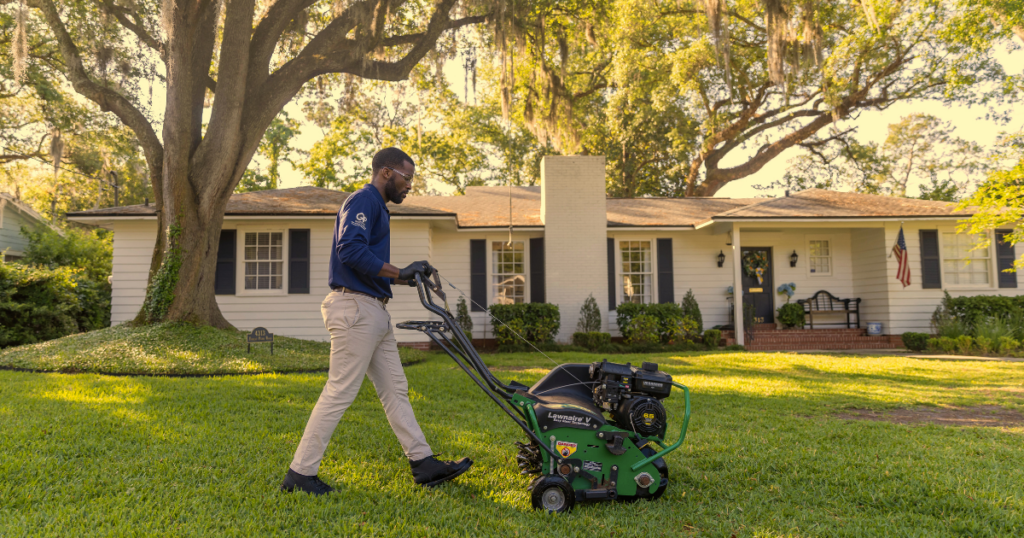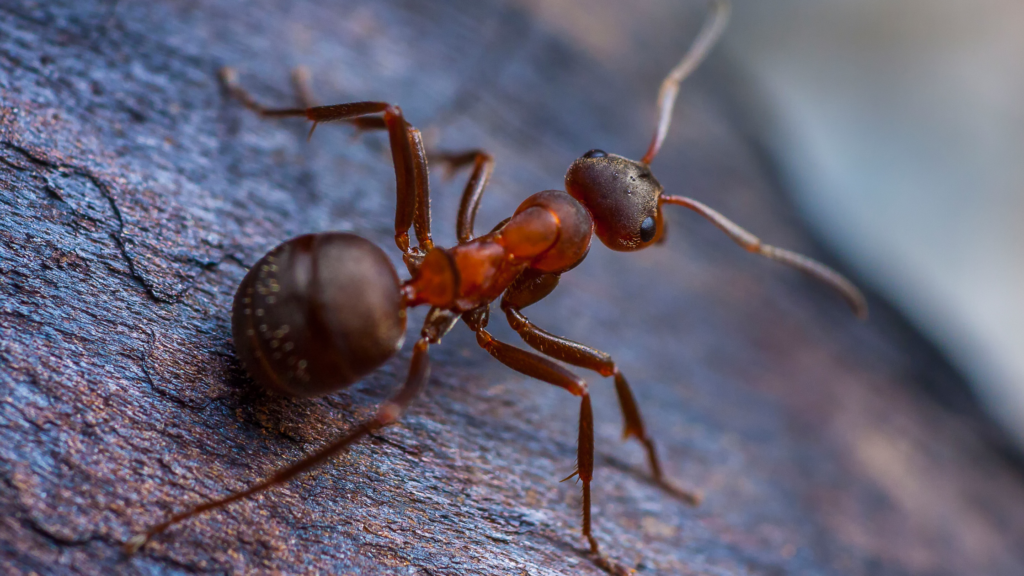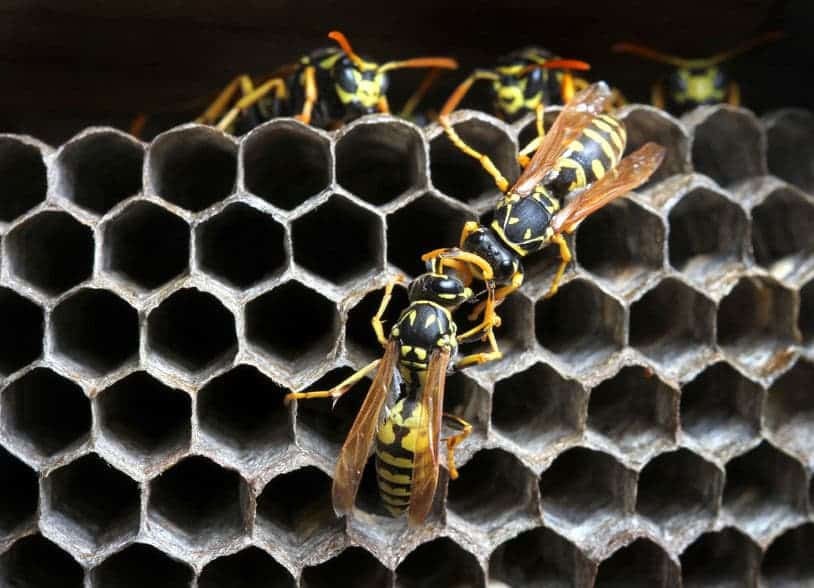St. Augustine grass (the most common type in Florida) is very picky about improper lawn care. When mowing, for example, it’s tempting to cut the lawn as short as possible to go longer between mowing sessions, but this risks the health of your lawn. Mowing at the right height is an important part of maintaining a lush, beautiful lawn. So is appropriate watering, seasonal pest control, and identifying brown patch fungus.

Mow, Mow, Mow the Lawn
Grass needs sunlight, but cutting it too short allows too much sunlight to reach the soil where it grows, where the problems begin. Not only will the soil dry out more quickly, stressing your grass and allowing pests to attack, but weed seeds will have the light they need to germinate.
Alternatively, allowing your lawn to get too tall between mows can make your grass a better home for all types of pests. In general, the rule of thumb is never to cut off more than a third of the total height of the grass blade in one mowing session. You may need to mow about every five days during the warmest months and perhaps twice a month when growth slows in late fall and winter.
Although it’s a bit of a hassle, if you have some grass that grows in shady areas, it should be cut even higher than areas that get a lot of sunlight. Grass in shade may have to compete for nutrients with the roots of trees; the more leaf blades left, the better the grass can compensate for the reduction in light.
The Importance of Irrigation
Using the right amount of water does more than help keep your lawn lush and green. Underwatering leaves your yard more vulnerable to disease, weeds, and bugs. To reach the sweet spot, a lawn needs an inch and a half of water per zone, weekly, which typically translates to watering twice a week for 30 to 45 minutes. The goal: water as infrequently as possible to achieve your goals.
The “when” is also crucial. Water early in the day, ideally when yards are typically covered in dew. If you wait until the middle of the day, water will likely evaporate so that the lawn won’t receive enough moisture. Wait until evening or night, and then the lawn will probably remain wet too long, which can make the grass vulnerable to disease. When the weather is especially hot, wait until the late afternoon or early evening to water.
Why We Recommend an Irrigation System
Proper watering is key to a healthy lawn. The long growing season and the types of lawn grasses most common in Florida require the even, regular watering that irrigation systems provide. In our experience, watering by hand or moving hose-attached sprinklers around the yard is not as effective.
Brown Patch Fungus
Brown Patch, a fungal disease, can quickly destroy a lawn’s aesthetic. Generally, symptoms begin to show during fall and early spring. This is triggered by rainfall, excessive irrigation, overapplication of nitrogen fertilizer, or extended periods of high humidity that result in the grass being wet for more than 48 hours.
Brown Patch Fungus usually causes circular, thinned patches of light brown grass. The areas can range in diameter from a few inches to several feet. These areas can appear quickly overnight. The fungus infects the leaf closest to the soil. A soft, dark rot occurs at the base of the leaf and can be easily pulled off the stem. Grass that is overstimulated by nitrogen fertilizer just before or during hot, humid weather is more susceptible to Brown Patch Fungus.
Lawn Pest Control from Turner Pest Control
For a beautiful yard, lawn pest control is also crucial. Problematic critters can include mole crickets, sod webworms, armyworms, chinch bugs, lawn grubs, ticks, mosquitoes, moles, fire ants, and more. To help, as part of our lawn and outdoor services, we’ll tackle the pests that can damage the health of your yard.
We’ll provide an initial inspection to identify any problems and assess your lawn’s condition. Our experts will check for weeds, fungi-related diseases, and pest infections. We’ll share our findings with you and create a personalized plan for your specific needs.
We’ll keep your family and pets safe from dangerous chemicals by treating your yard like you would. Our trained technicians treat your lawn every eight weeks. Once they’re finished, water your yard using the irrigation system 48 hours later. If any issues arise between visits, let us know. We’ll return for retreatments to keep your green getting mean!
To get started on making your lawn lush and green again, fill out our Free Inspection Form.



